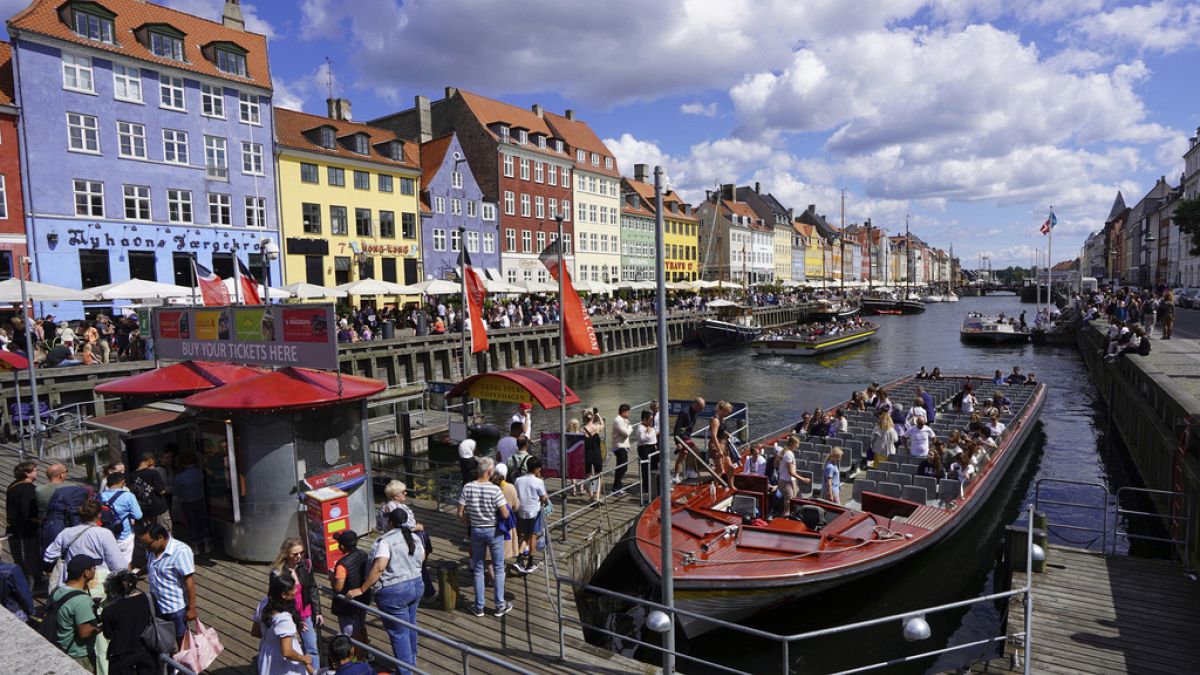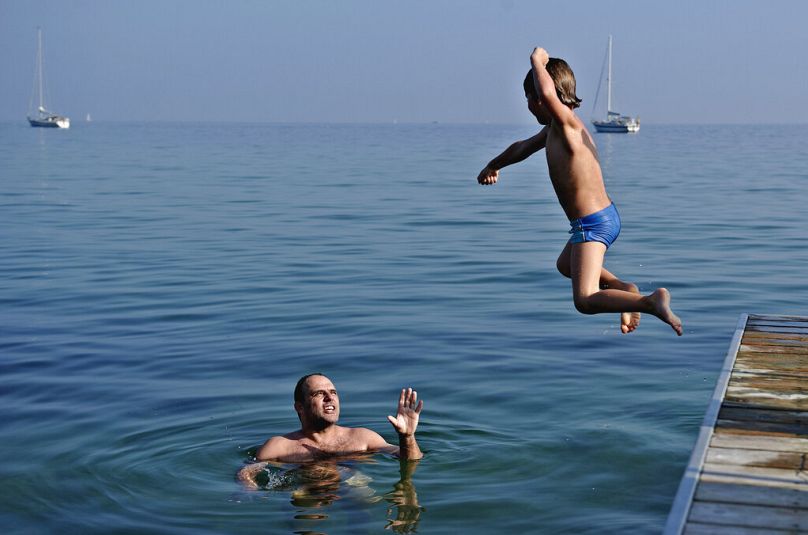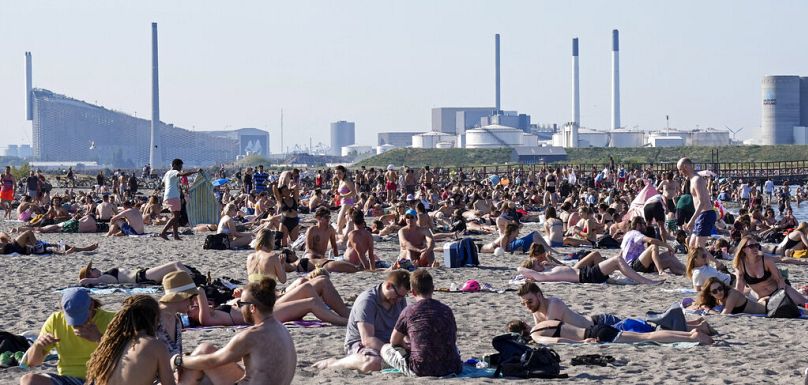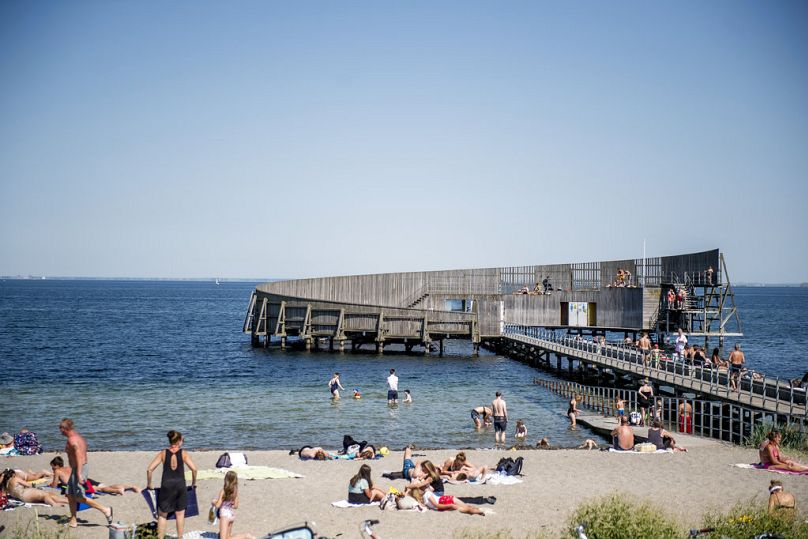While the south swelters, Denmark’s mild temperatures and extended daylight hours are providing the perfect summer escape for many.
With rising temperatures in southern Europe, more and more tourists are flocking to cooler destinations in the north.
Denmark, in particular, has become an increasingly popular choice for those looking to escape the scorching summer heat.
According to the recently published report from DMI, the official Danish meteorological institute, the national average temperature of July 2024 was 16.2C.
For much of southern Europe, high temperatures tell a very different story.
Italy has been enduring nearly constant heatwaves since mid-June, with parts of the country experiencing record temperatures exceeding 40C. France has also faced several days of high-temperature alerts, with temperatures soaring over 30C across the country last week.
Southern Europe flocks to the north
Amid the bustling crowds in Copenhagen's iconic Nyhavn, it's not uncommon to catch snippets of French, Spanish, and Italian, as tourists from across southern Europe flock to the city with its cooler climate.
Sagrario, normally a resident of Madrid, stopped by in Denmark on a cruise ship tour in Scandinavia with her daughter.
“In Madrid, we've had a heat wave for three straight weeks with temperatures of minimum 30C and maximum temperatures of 40C,” Sagrario’s daughter Sofia said.
Copenhagen's hospitality industry, which traditionally caters to tourists from northern Europe and the United States, has noticed a significant increase in visitors from southern Europe.
“We definitely see a big increase in southern European tourism. It's France, it’s Greece, it’s Spain, and Italy,” Karim Nielsen, the CEO of Kolpin Hotels which owns Hotel Sanders in Copenhagen, told Euronews.
“And that increase we have seen that coming for the last 5 or 6 years but the last two years it has been increasing a lot. And, here at Hotel Sanders, we normally have something like 80 per cent Americans, but that number is actually decreasing a little bit. And we see especially from Spain and Italy, we have approximately 10 per cent of our occupancy from southern Europe now. That's a quite big increase from formal numbers from 3-4 per cent” Nielsen added.
Nielsen attributes this increase to southern European guests seeking cooler weather in the north.
Not limited to the capital
South Zealand, about 80 kilometres outside Copenhagen, is an emerging destination for those looking for a cool summer vacation.
“The trend for southern European guests coming to Denmark started around three years ago. Last year we really saw it. And this year, I’d use the word extremely high. And it has gone from maybe 5 per cent to 30-35 per cent of our guests,” Filip Rasmussen, the owner of Jungshoved Præstegaard, a traditional Danish B&B in Præstø, said.
Rasmussen noted that while a new agreement with a French travel agency has contributed to this increase, there has also been a notable rise in visitors from southern Switzerland, Italy, and Spain.
“The topic is heatwave which is actually the first thing they say if you ask “why are you visiting Denmark?” he added.
Patricia Levantis and Franck Wattinne, residents of Marseille staying at Jungshoved Præstegaard, say they are satisfied with Denmark’s cool late August climate, which allowed them to enjoy outdoor activities.
“25 degrees during the day. In the evening, you can wear a small sweater or a small jacket. So we can do very pleasant things,” Wattinne said.
The official tourism organisation of South Zealand and Moen, Visit Sydsjælland & Møn, confirms the trend.
Bender also noted that while the tragic fires in Greece are a sombre backdrop, Denmark is glad to offer a cool respite for those affected.
“When you see all the fires in Greece and so on. It's a tragic background. But of course, then we are happy to say, come and cool down for a couple of weeks up here at North and discover our beautiful nature and culture,” Bender added.
More than the cooler climate to offer
Stakeholders of the tourism industry in Denmark say that the new influx of tourists are not just coming from southern Europe but other parts of northern Europe such as the Netherlands and Belgium.
“It’s also not only people from the southern part of Europe. It's also people who used to travel to the southern part, but now choose the north and find out the quality we have. In the middle of the summer, we have much, much longer nights. We call them the white nights even,” Rasmussen.
At the height of summer, during the solstice, the sun doesn’t set until around 10 PM in Denmark, giving visitors almost an hour more daylight compared to Italy, for example.
According to data from Visit Denmark, the Official Tourism Organisation of Denmark, the number of Italian and French tourists visiting the capital region this June has surged by 23%, growing from around 49,000 in 2019 to nearly 60,000 in 2024.
Copenhagen has recently broken records for overnight stays as the city gains popularity, a trend explained by Wonderful Copenhagen, the official tourism organisation for Denmark’s capital region.
Wonderful Copenhagen says, however, that the record-breaking trend cannot be attributed to the cool climate but is thanks to the culture and culinary scene in the city.


















